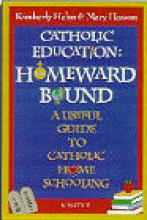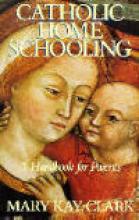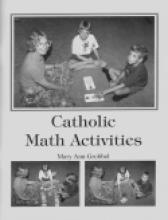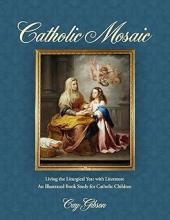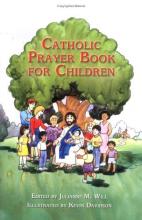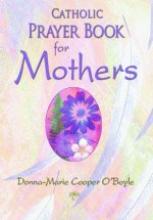No name
Catholic Children's Treasure Box Books 1-6, story of St. Therese
Catholic Children's Treasure Box, Volumes 7 and 8
These two volumes of the Treasure Box Books contain a very simple story of Mary's life, appropriate for very young children. The full-color illustrations are quite charming. Please note that this story has the marriage of Mary and Joseph come before the Annunciation, which is not in accordance with the actual Bible account. Perhaps the authors felt that very young children weren't ready to understand this part of the story.
Update from webmaster, March 2024: Bible scholars tell us that what is often translated as "betrothal" was really the first part of a two-part Jewish wedding rather than an engagement; in the time of Christ, these two parts were celebrated on separate dates separated by as much as a year. However, the couple was legally married after this first ceremony although they would not live together until after the second. This is why Matthew 1:18-19 reports that when St. Joseph discovers that Mary (his "betrothed") is with child, "her husband Joseph" resolves to divorce her (or send her away) quietly — husband and divorce, because they are legally married. See this article for more details and some profound implications for familiar Gospel passages: No, Mary Was Not an "Unwed Mother." Thus, the Treasure Box account is (perhaps unintentionally!) rather accurate on this point.
Catholic Education: Homeward Bound
I know a number of people who decided to homeschool based on the information provided in this book. The authors have done a very impressive job of outlining the positive benefits of homeschooling, in a non-threatening fashion. Because many of the reasons they give for homeschooling focus on practical and "natural law" reasoning they can be easier for some people to handle than arguments that focus on Church teaching (after all, you have to start somewhere =). The authors cover the benefits of having your children at home with you, concerns about the academic aspects of homeschooling, socialization, the role of the father, and spiritual advice for busy mothers. I was especially impressed with the nearly forty pages devoted to homeschooling highschoolers. Unlike other books which seem to treat all teens as rebels (which I have found disappointing as a former homeschooled-teen), Mrs. Hahn and Mrs. Hasson discuss ideas for making the most of the high school years through homeschooling. Also included in the teen section is a lot of information about homeschoolers preparing for and getting accepted into college.
Remember that you shouldn't treat any of the Catholic homeschool books as a perfect and complete guide. (This is why I recommend reading a number of them for the sake of balance.) This book has a bias toward putting together your own program and doesn't portray the benefits of using a structured program particularly well.
The resources section in this book is extensive, but is certainly not its strong point. Several of the resources used by the two authors are considered problematic by some Catholic homeschoolers. In terms of the lifespan of the Catholic Homeschool movement, this book is already quite old (published in 1996). We should be grateful that there are many more excellent choices, in terms of programs, books and other materials, for Catholic homeschoolers today than just a few years ago.
Catholic Geography Bee
The Participant/Student Book (softcover - stapled), is a study book for learning facts and figures in preparation for a Geography Bee. Three summary charts provide a quick reference on Name Derivations, Famous Natives, Mottos , Landmarks, Catholic Facts, Historical Facts, Industry, Admission Dates, Capitals, Flowers, Birds, Nicknames and Trees for each state. The bulk of the text consists of Study Sheets on: Capitals, State Flowers, State Birds, Nicknames, State Trees, Famous Natives, Landmarks, Catholic Facts, Historical Facts, Name Derivations, Mottos and Industry. In addition to a simple chart for each category, the Study Sheets provide a "To Learn More" segment which provides detailed information about each item. For example, the State Flower section includes a description of each type of flower and the Famous Natives section provides a brief biography of a famous native from each state as well as an extensive list of other famous natives. Of special interest is the "State Catholic Fact" section which provides Catholic connections for each State and which should provide a starting point for studying more about Catholic influences in the United States. The last half of the book offers various worksheets and other masters to photocopy - State Profile (can be used to record or test information for each state), State Flowers to color and learn, State Birds to color and learn, simple outline maps of each state, and a full outline map of the whole United States. Also are included are a partial listing of Catholic-named Cities of the U.S., a Bibliography, Sources for Further Study and Internet Sites for Further Study.
The Coordinator/Parent Book offers master category cards and a certificate of honor to copy and color for an official-looking Geography Bee, a spreadsheet of basic facts, and extensive sets of questions on three different difficulty levels for each category of study in the Participant Book (State Capital, State Flower, State Bird, State Nickname, State Tree, State Landmark, Famous Natives, and State Catholic Fact). The third difficulty level also offers questions regarding State Historical Facts. Because questions for each category are listed separately (rather than being intermixed), families could choose to focus on just a few category or difficulty levels at a time if they wish. Each question in this book provides the answer directly after the question in boldface type for ease of use.
I'm very, very impressed with the scope and quality of this Geography program. In the past, Catholic Homeschoolers have had limited resources available for State History and Geography (particularly from a Catholic perspective). These materials provide a welcome solution to this need as well as a wonderful project to be undertaken by a Catholic homeschool group or just a few families getting together. Highly recommended.
Catholic Home Schooling
Note: This review is based on the 1993/1998 editions of this book. The book was rewritten in 2006 and that edition has not yet been reviewed. Mary Kay Clark, who is the director of Seton Home Study has recently revised what was the first book published on Cathholic Homeschooling. It has quite a different flavor from Catholic Education: Homeward Bound and make a strong case for homeschooling from the perspective of Catholic teaching and Church documents. The author includes many practical ideas for running a busy household while homeschooling and finding creative ways of making a structured homeschool program flexible enough for your needs. Chapters include "How to Begin Catholic Home Schooling", "Home Schooling in the Large Family", "The Sacramental Life" and special chapters by other authors on topics such as "The Father's Role in Homeschooling", "Home Management in the Catholic Home Schooling Family" and "Home Schooling the Catholic LD Child." I particularly enjoyed the stories of the author's own homeschooling experiences with her seven boys and her practical ideas of making homeschooling work in the here and now by not expecting to be able to do everything perfectly (e.g. using paper plates and clearing out a lot of unnecessary clutter in the house).
Catholic Homeschooling fills and has filled an important role in the homeschool movement (particularly because it was simply the first book published on Catholic homeschooling) but, like all "advice" on homeschooling (including this website), should be used insofar as it is helpful to your family's needs rather than solely dictate how your family does everything (this, I believe, would be keeping with the author's intentions, particularly as she explains the role of Seton Home Study).
Out-of-date material:
"The only other comprehensive home study program for children which has accreditation is Home Study International, which is run by Seventh-Day Adventists." (p. 103) A number of Catholic homeschool programs as well as Protestant ones are now accredited if that's an important issue to you.
"If you want Catholic textbooks, you need to enroll in a Catholic home study school." (p. 100) This seems rather shockingly out-of-date even for the revision date of 1998. Many Catholic textbooks have been available from numerous sources (including TAN, Neumann Press, Seton Educational Media, Catholic Heritage Curricula, Emmanuel Books, Kolbe Academy, etc.) for a number of years without being enrolled in any school at all.
You'll have to keep in mind that this book is biased toward using a structured homeschool program (and the Seton Home Study program in particular) and doesn't portray the concept of "putting together your own program" particularly well. The computer section is significantly outdated and not particularly useful - for example, it discussescomputer bulletin boards rather than the Internet, and was clearly not revised in the 1998 edition. A few of the parenting ideas that are discussed might be viewed negatively by those of us practicing an "attachment parenting" philosophy. Also I know a number of very good Catholics who were turned off by the authors rather "authoritative" tone and were unwilling to even finish the book. I'm not highly enthusiastic about every resource mentioned in the appendix (although most are great!) but Dr. Clark does recommend one publication that I have serious problems with - Catholic Family News.
Catholic Math Activities
If you're looking for a way to liven up your math program or to bring in some painless math review you have to pick up this book. Catholic Math Activities provides dozens of math games that children actually enjoy playing and almost all of them only require dice and simple home-made material. The author makes use of children's interests by revolving the games around things such as baseball cards and animals. What really pleased me about this program is the clever way our Catholic faith was brought into these games. Some of the games revolve around a short story involving our faith, bible stories (e.g. Noah's Ark and 2 by 2) and simple Catholic sayings to name a few.
I was especially delighted that this book provides games for such a wide range of ages and with a text that is simple enough that an older sibling can read the instructions and then go on to play the game with the younger child. Topping off the program are 40 nicely hand-drawn illustrations of saints. Each saint is accompanied with a short biography and math problems which, when solved, give the child information as to how the picture should be colored. This is definitely a new twist on color by number and one that my children have enjoyed.
Catholic Mosaic – Living the Liturgical Year with Literature
The title clearly explains what this book is all about: Gibson took the twelve months of the year, wove in the liturgical celebrations and linked these to marvelous picture books – creating a mosaic of Catholic culture and beautiful literature.
But this book is much more than an annotated book list, although that is included too. Gibson gives suggested questions for you to discuss with your children. She gives suggested copywork – that is, quotes that children memorize or use for handwriting practice. She gives ideas for activities that will reinforce the meaning of the particular book. She helps families to truly live and embrace the wondrous Catholic traditions connected to feast days, liturgical celebrations and other things Catholic.
Some of the books described and linked in this book are Catholic illustrated classics – books like The Weight of a Mass by Josephine Nobisso, Song of the Swallows by Leo Politi and St. George and the Dragon by Margaret Hodges are extremely popular with many Catholic parents and children. But Gibson goes beyond the “Catholic classics” and mentions books like The Little Match Girl by Hans Christian Andersen (illustrated by Rachel Isadora) and The Giving Tree by Shel Silverstein and how you can apply Catholic teachings to these books, giving your children a rich and lasting understanding of our Catholic culture.
In total, Gibson integrates FIFTY-TWO illustrated children’s books with the Catholic calendar and Catholic living. Books that cover the Mass, First Communion, various saints and important liturgical seasons are included. In addition, she suggests other books which may also work (but omits questions and activities linked to these “second-string” books some of which unfortunately are out-of-print or hard-to-find).
All the primary books are easily attainable from booksellers; in addition, books by popular authors like Tomie dePaola are usually available at public libraries so as not to strain your book budget too much. However, after seeing these books, you might want to have good copies for your home library. Gibson has selected books not only for the meaning in their words, but also for the beauty of their illustrations. These books could easily be used as an art study in conjunction with the literature, religion and other subjects covered in these books.
Further resources that Gibson gives the reader are suggestions for creating and maintaining a “Liturgical Notebook” throughout the year – a memory scrapbook of this literature-based journey – as well as incorporating some of the traditional Catholic homeschool resources (for example, CHC’s A Year with God or Seton’s Art 1).
Run, don’t walk, to get a copy of this book. I know I sound effusive, but this book is remarkable in its ambitious objective which is stunningly successful. This is one of those homeschooling volumes that needs to be on every Catholic resource shelf – that is, when it’s not being used!
Catholic Prayer Book for Children
This is a very nice children's prayer book illustrated with full-color cartoon-like pictures. The book includes:
- Traditional prayers like the Hail Mary, Our Father and Morning Offering
- Prayers of the Saints, like Prayer of Saint Francis and Breastplate of St. Patrick
- Prayers and Mysteries of the Rosary (including the Luminous mysteries)
- Psalms from the Bible
- Some special prayers written just for children
- Gentle invitations for children to talk to God in their own words too.
- A segment on "Going to Confession" which includes instructions as well as prayers
- "Stuff Every Catholic Kid Should Know" like Spiritual and Corporal Works of Mercy and the Ten Commandments
- "Prayers from the Mass"
Also available in softcover


